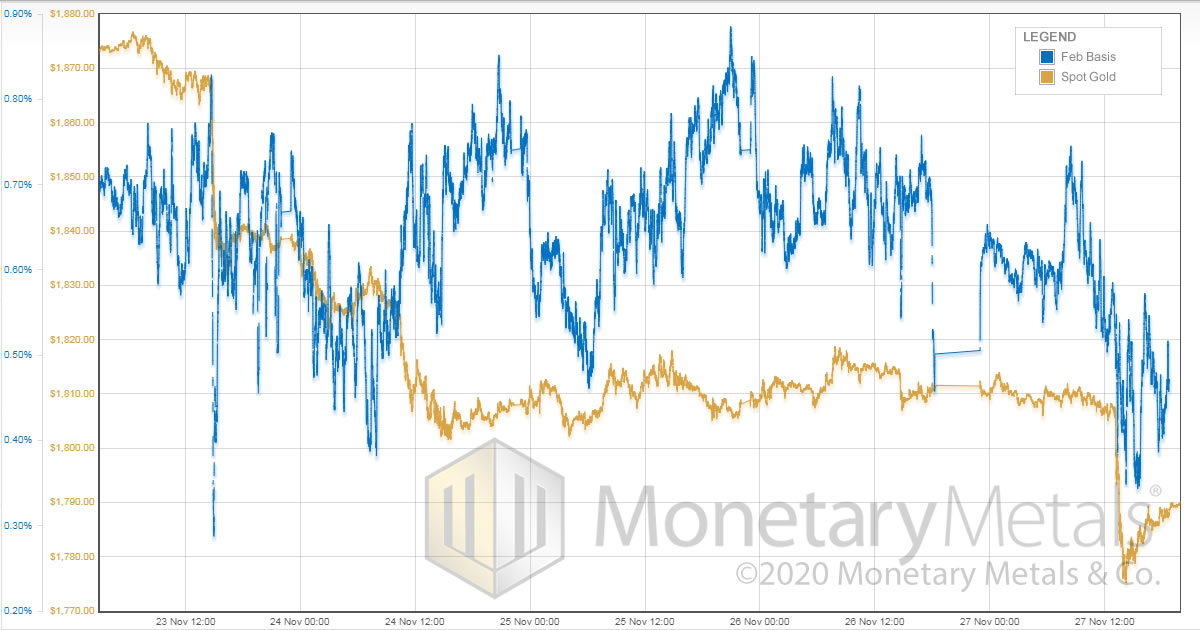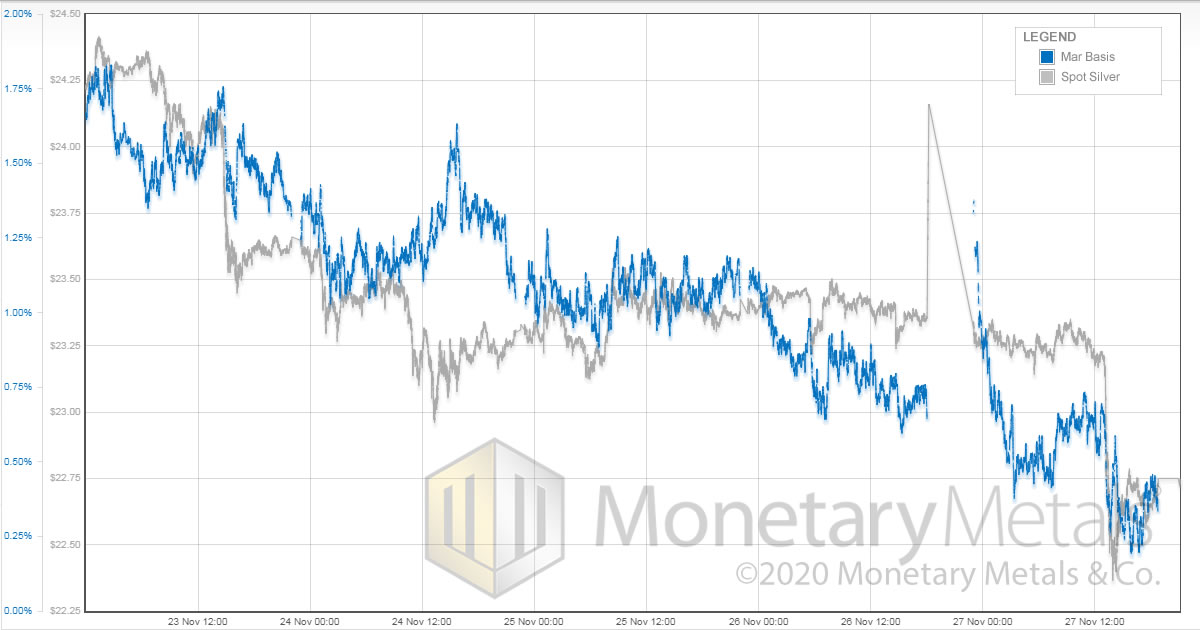We are hearing rumors this week of a shortage of the big silver bars, the thousand-ouncers. No, we don’t refer to bullion banks saying this. Nor big dealers, who are happy to sell us as many of these as we can buy. Nor our peeps in high places (we don’t claim to have any such peeps). We refer to the usual suspects. We talk about abundance and scarcity of the metals in nearly every one of these reports, in terms of the spread between spot and futures prices. Some people assume that their local dealer’s markup on Eagles represents spot. Sometimes the price of Eagles may seem a decent proxy for spot, but it is not. Eagles are produced in a supply chain that is inflexible. If demand rises above a threshold, it will first pull the Eagles out of the distribution
Topics:
Keith Weiner considers the following as important: 6a.) Keith Weiner on Monetary Metals, 6a) Gold & Bitcoin, Basic Reports, Featured, newsletter
This could be interesting, too:
Nachrichten Ticker - www.finanzen.ch writes Die Performance der Kryptowährungen in KW 9: Das hat sich bei Bitcoin, Ether & Co. getan
Nachrichten Ticker - www.finanzen.ch writes Wer verbirgt sich hinter der Ethereum-Technologie?
Martin Hartmann writes Eine Analyse nach den Lehren von Milton Friedman
Marc Chandler writes March 2025 Monthly
We are hearing rumors this week of a shortage of the big silver bars, the thousand-ouncers.
No, we don’t refer to bullion banks saying this. Nor big dealers, who are happy to sell us as many of these as we can buy. Nor our peeps in high places (we don’t claim to have any such peeps).
We refer to the usual suspects. We talk about abundance and scarcity of the metals in nearly every one of these reports, in terms of the spread between spot and futures prices. Some people assume that their local dealer’s markup on Eagles represents spot. Sometimes the price of Eagles may seem a decent proxy for spot, but it is not. Eagles are produced in a supply chain that is inflexible. If demand rises above a threshold, it will first pull the Eagles out of the distribution channel. And then it will drive up the premium on Eagles. This may be a shortage of Eagles, but not necessarily a shortage of silver.
It’s All Relative
Let’s make sure we’re clear. The magnitude of the difference between what we call relative abundance and relative scarcity could be around 2% annualized. For a contract that expires in two months, this is 0.33%. For a $23 metal, this amounts to around 7.6¢. Another way of saying that the change in the spread is small, is to say that the basis is a sensitive indicator.
Another rumor we’re hearing, related to the first, is that a Famous Buyer is purchasing a large quantity of silver. Whenever you read about a Big Transaction, we encourage you to ask if the buyer is urgently taking the offer price, or if there is an urgent seller hitting this buyer’s bid price. It may be good enough for the mainstream media to say only that “Chinese firm Acme bought 10,000,000oz of silver” (or worse, “China bought”). But for serious analysis of the metals, they need to say if the transaction is at the bid or offer price.
These are quite different scenarios. In one, the buyer wants the metal today and is a price-taker. A big buy will of course lift the price. In the other scenario, the seller wants the cash today. Either way, the story reads the same—the buyer is the active participant.
Perhaps an easier way to think of this is in terms of who is the subject and who is the object of a sentence. The subject is the actor. In the first case, we can say that “Acme bought 10M ounces.” In the second, we would use passive voice. “10M ounces were sold to Acme.”
Active vs passive voice paint very different pictures. As they are very different scenarios.
Also keep in mind that Big Famous Buyers can be wrong, and often are. Even if Acme hit the offer, this does not tell you that the price of silver will rise tomorrow. There were many Big Famous Buyers between 2011 and 2018 (and probably several since September).
Review the FundamentalsLet’s look at a high-resolution graph showing the price of gold and the gold basis (February contract), for last week. There are several phases to this chart. During the big $40 price drop beginning on Monday, we see the basis fall from around 0.7% to under 0.5%. This price drop was led by selling of futures, but make no mistake there was selling of metal there, too. Then there was a big rise in basis to around 80%, then it subsides. Then again and again. These are futures buyers expecting a price rise that does not occur in the magnitude they probably expected. Then on Friday, another dip of $30 occurs, and the basis also drops from a peak around 0.7% to a trough under 0.4% before bouncing back around 0.45%. With the premium for February delivery so close to spot, there is not a lot of abundance in the gold market right now, if not a bit of scarcity. |
Gold Basis and Co-basis and the Dollar Price |
| Here is silver.
In silver, the basis action matches the price action much more closely than it did in gold. The only deviation is on Tuesday afternoon (ignore the glitch on Thursday evening). As the price moved from around $24.25 to around $22.75, the basis fell—this is the March basis, so it’s a ways out—from 1.75% to under 0.5%. Silver became considerably less abundant to the market last week. Arguably, it became considerably less expensive too. |
Silver Basis and Co-basis and the Dollar Price |
The Gold Exchange Podcast
After being asked repeatedly to start a podcast, we have one in the works. To sign up for episode alerts beginning in December, visit The Gold Exchange Podcast.
Tags: Basic Reports,Featured,newsletter










